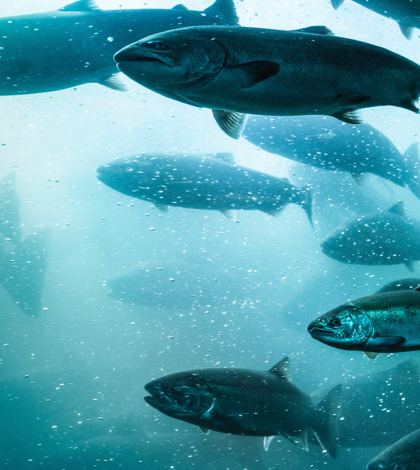The California Department of Water Resources and federal Bureau of Reclamation took steps toward improving fish passage and rearing habitat in the Yolo Bypass last week with the release of the draft environmental document for the proposed Yolo Bypass Salmonid Habitat Restoration and Fish Passage Project in Yolo and Sutter counties. The document is being made available for public review and comment.
The draft Environmental Impact Statement/Environmental Impact Report (EIS/EIR) identifies methods to improve adult fish passage and increase floodplain rearing habitat for juvenile salmonids in the Yolo Bypass. The document analyzes the effects of taking no action and six alternatives that would put one or more gated notches in the Fremont Weir, at the northern end of the Yolo Bypass.
The goal of the project is to increase the volume of water entering the Yolo Bypass in an effort to pull more fish onto the bypass and create a larger floodplain area. This would allow juvenile salmon to feed in a food-rich area for a longer time where they can rapidly grow to a large size, thus improving their chances of survival as they travel to the ocean. The project would also reduce migratory delays for adults returning to their spawning grounds.
The project increases the availability of floodplain fisheries rearing habitat for juvenile Sacramento River winter-run Chinook salmon, Central Valley spring-run Chinook salmon and Central Valley steelhead, per Reasonable and Prudent Alternative (RPA) action I.6.1 as described in the existing biological opinion from the National Marine Fisheries Service. It also reduces fish passage migratory delays and loss of fish at Fremont Weir and other structures in the Yolo Bypass for salmon, steelhead and sturgeon, per RPA action I.7. Analysis under CEQA indicates the potential for significant impacts to water quality, fisheries, agricultural resources, air quality, and noise caused by the construction and/or operation of some of the alternatives under consideration.
Two public meetings have been scheduled to receive oral or written comments on the draft EIS/EIR:
- Wednesday, Jan. 17, 2018, 6 p.m. to 8 p.m., Woodland Community and Senior Center, 2001 East Street, Woodland, CA 95776.
- Thursday, Jan. 18, 2018, 1:30 p.m. to 3:30 p.m., West Sacramento Community Center, 1075 West Capitol Ave, West Sacramento, CA 95691.
Copies of the draft EIS/EIR, are available at:
http://www.water.ca.gov/environmentalservices/yolobypass/projects/yolo_salmonid.cfm
https://www.usbr.gov/mp/nepa/nepa_project_details.php?Project_ID=30484
A printed copy is available to view during business hours (8 a.m. to 5 p.m.) at the DWR office located at 3500 Industrial Blvd. in West Sacramento and Reclamation’s Bay-Delta Office at 801 I St., Suite 140, in Sacramento.
Please submit written comments to either:
Karen Enstrom, California Department of Water Resources, 3500 Industrial Blvd., West Sacramento, CA 95691 or Karen.Enstrom@water.ca.gov.
Ben Nelson, Bureau of Reclamation, Bay-Delta Office, 801 I St., Suite 140, Sacramento, CA 95814 or bcnelson@usbr.gov.
Written comments must be received by close of business Thursday, Feb. 15, 2018.
 California Water News Daily Your Source For Water News in California
California Water News Daily Your Source For Water News in California


